We reached McMurdo Station at about 10 AM and only had four hours until we had to gather ourselves at the transport center to catch a ride out to Willy Field - the ice runway. As I look back it might be the richest four hours of the entire trip - full of sights and sounds that I'll never forget. This was the first face to greet me at McMurdo -
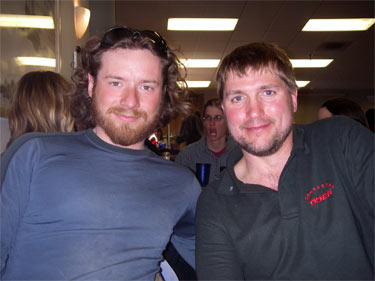
Yes this is a local showing me what a real beard looks like! It's also Erik Boraas from Soldotna, Alaska - he had been in my Russian classes and skied on the cross country ski team that I coached back in the mid-90's at Skyview High School. My legs still ache from the day he skied over 100 km in our skiathon to outdo me by about 2 km! He's working this summer season at McMurdo as a general laborer (do it all guy) for Raytheon Polar Contracting. He met our helicopter to say "hi" and then we had a chance to catch up over lunch - imagine traveling that far and being surprised by a friend - it was awesome!
Erik advised me to take up a hike up observation hill - reminded me of our old ski team treks up Mount Marathon in Seward every spring and summer, same loose rock surface - but the town did look a bit different down below.
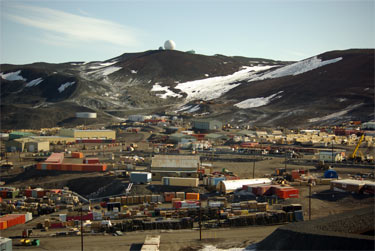
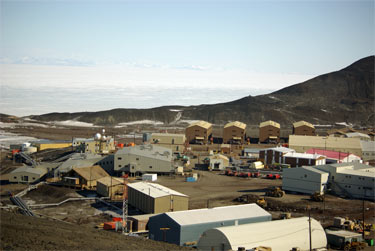
That's it - those two pictures show you all there is to McMurdo. This time of year about 1200 people live here - 300 scientists and the rest support staff to keep the place running. Kitchen staff, carpenters, mechanics, operators, administrators, even bar keepers, baristas and postal workers. I did find a little Christmas spirit on my walk -
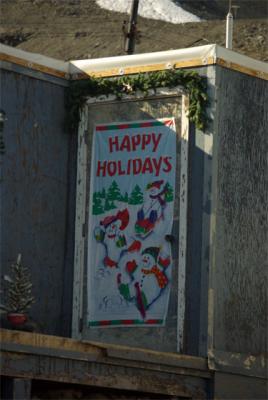
So it's not completely isolated. But I should note that when we arrived and the flags were at half-mast, the first five people I asked didn't have a clue why ("I don't think anyone's died here lately" was one quote) and the sixth figured it must be for James Brown - the king of soul. Later we found out that President Ford had passed away the night before.
In winter the population drops down to about 200, just enough to do the research and keep the base functioning. Here's a view from a website giving you the full view from overhead in early spring.

After walking up the hill for my overall view - I took a quick walk through the Crary Lab, the main science headquarters at McMurdo.

The Albert P. Crary Science and Engineering Center at McMurdo Station was dedicated in November 1991. The laboratory is named in honor of geophysicist and glaciologist Albert P. Crary (1911-1987), the first person to set foot on both the North and South Poles.The laboratory contains state-of-the-art instrumentation to facilitate research and to advance science and technology. It contains modern personal computers and workstations, a computer-based geographic information system (GIS), and a local area network. It has laboratory space, analytical instrumentation, and staging areas for a wide range of scientific disciplines. The laboratory also supports special activities, including environmental monitoring, snow and ice mechanics, and meteorology. The facility replaces outdated science buildings that were built as early as 1959. (This info and picture is from the NSF website)
Besides some state of the art labs and equipment, I found a few interesting projects that were functioning and I could photograph - the first being the aquarium which contained collected specimens from recent dives through the ice to the bottom of McMurdo. They had collected these ice fish, scientific name is Pagothenia borchgrevinki which have antifreezeglycopeptides (AFGP) that keep their cells from freezing even though their bodies cool below 32 degrees fahrenheit due to the lower freezing point of the salt water.
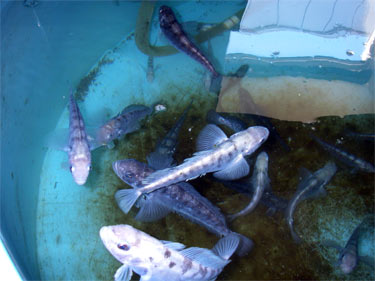
Scientists are also studying a number of species that grow unusually large in the cold waters of McMurdo sound - including this sea spider and the sea lice in the corner of the tank.
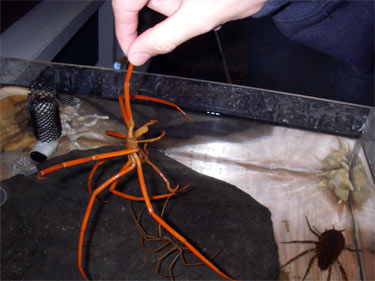
Scientists are also trying to understand the past climate of Antarctica - this piece of petrified wood shows that sometime in the past global cooling was a serious concern for Antarctica since it's far too dry and cold for any plant life to exist - especially large trees.
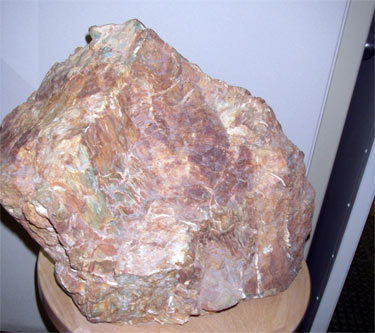
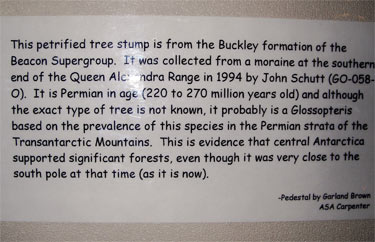
This is a real picture of a piece of core sample drilled from over 500 feet under the sea floor by the Andrill project. Look at all the interesting layer patterns that tell scientists about the sediments that settled to create the rock and the changes through time. This is a major international collaboration using sophisticated drilling equipment to collect the first ever core samples from deep under the Ross Ice Shelf - scientists hope to learn about the ancient climate of earth as well as the history of the Antarctic continent over the coming years as they drill deeper and explore the results.
The project has a great website at http://www.andrill.org/
When we were done here it was time for lunch - so I headed off to the cafeteria to join Erik for a hot meal. Everyone at McMurdo eats three meals a day here - we'd eaten well on the boat but no complaints here either.
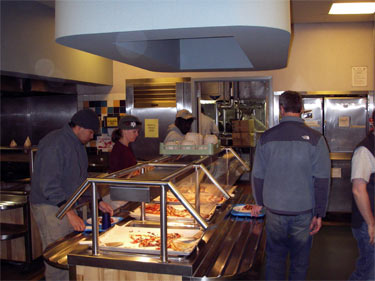
After lunch, a quick visit to the post office to mail about 40 postcards and a visit to the gift shop to buy last minute Christmas gifts - we were given a tour of the 1902 Scott Discovery Hut - located about a 10 minute walk out to Hut Point. This was a trip back in time to the age of Antarctic discovery - of Amundsen, Shackleton, Scott, etc - and I'll share about this powerful voyage into history tomorrow.
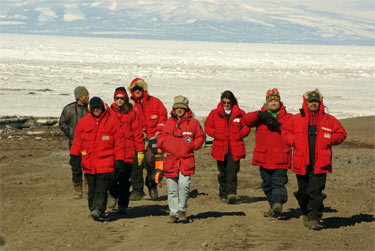
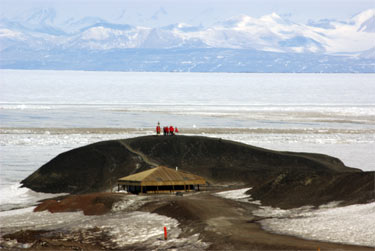


Comments